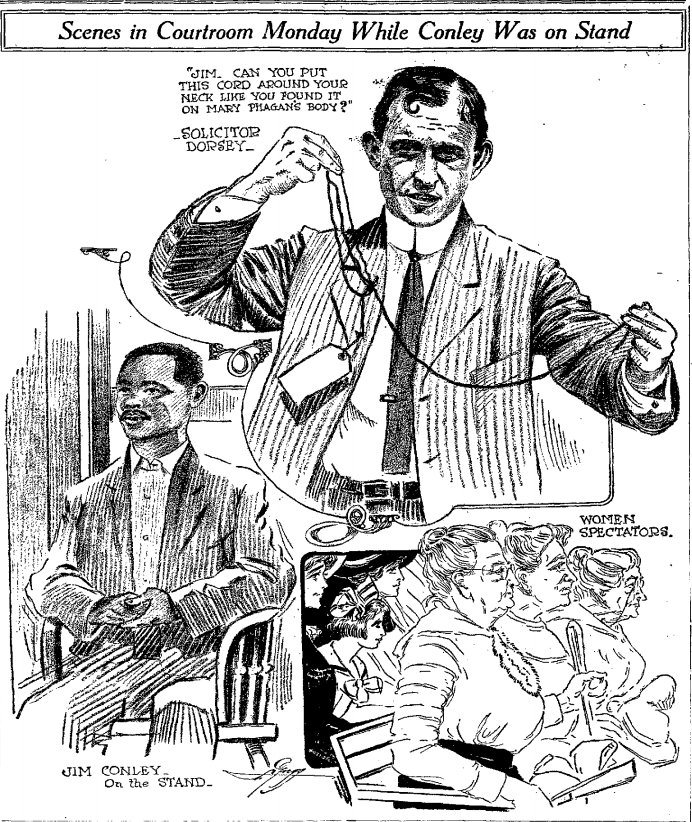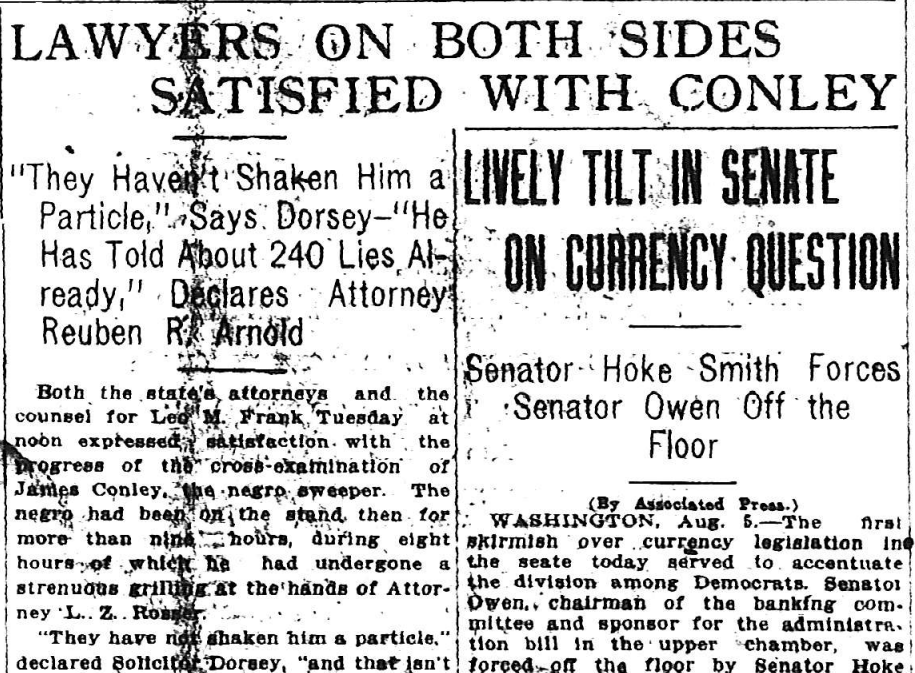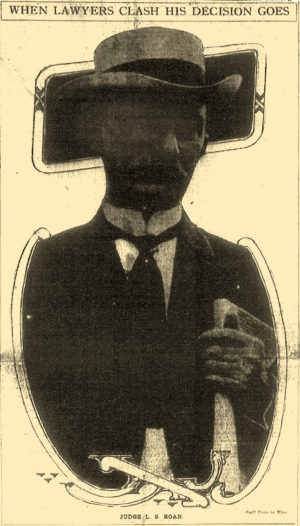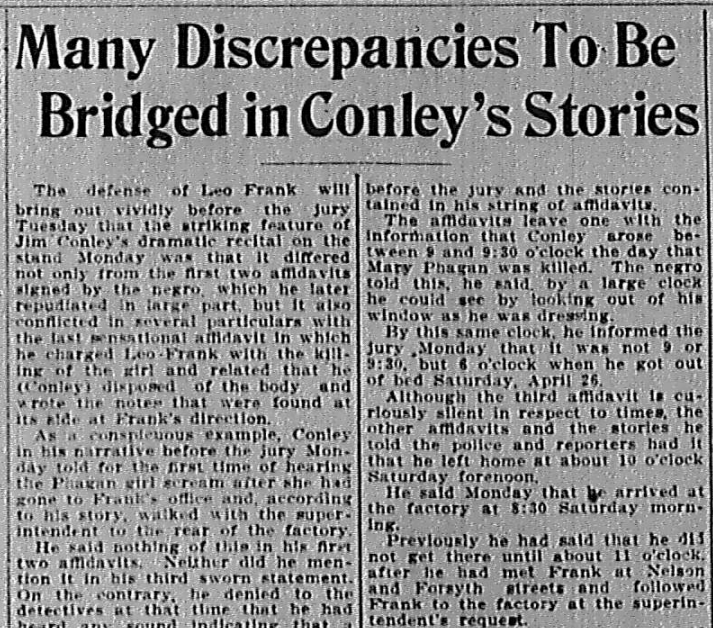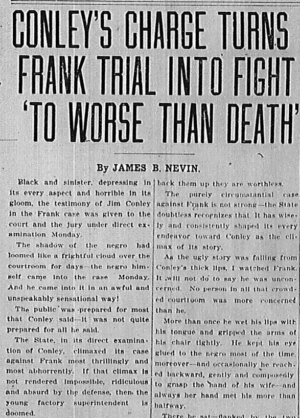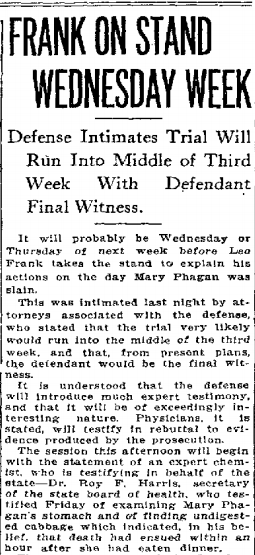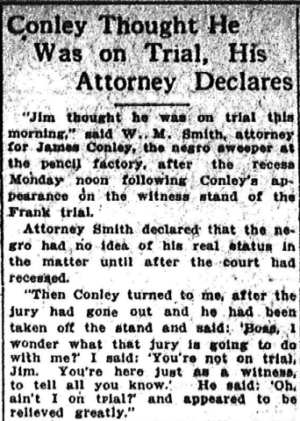Another in our series of new transcriptions of contemporary articles on the Leo Frank case.
Atlanta Constitution
August 5th, 1913
While T. Y. Brent, notary public and ex-officio justice of the peace, was waiting in the witness room of the Frank murder trial yesterday, the “big and little of it” came to him to pronounce the magic words which would make them forever man and wife, one and inseparable.
Cleve Ware, weighing at the most 120 pounds, and Mattie Turner, who could easily muster 250 pounds, if required, were the parties, being from the swell section of Darktown.
The judge performed the ceremony in the most approved style, and Frank murder trial witnesses acting as the marriage witnesses.
* * *




